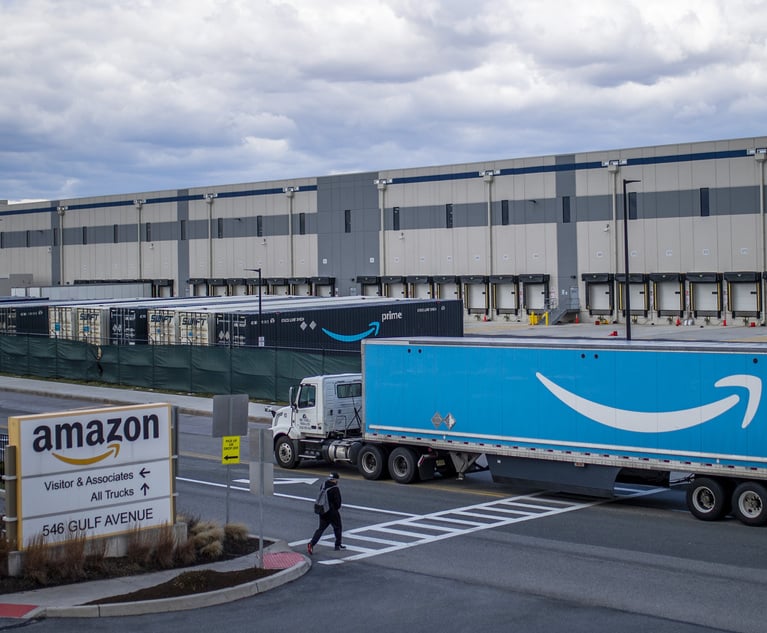There is a burden that comes with celebrity–a statement to which George Reyes, the CFO at Google Inc., can readily attest. After its unprecedented IPO in August 2004, Google began to show a little bit of its age in the fourth quarter of 2005, when its phenomenal growth began to slow ever so slightly to a mere 82%.
At a Merrill Lynch investment conference about Google's future growth rate, Reyes was asked whether indeed the wunderkind company was losing its pop–and being an honest sort, Reyes replied that while Google would still be growing at a double-digit pace, it might not be at quite the rate it was recording earlier in its life as a public company. Even though investors are always asking for the facts, they were thrown into a tizzy and Google's stock took a hit, dropping 12% in 20 minutes at one point.
There was also an incident at Analyst Day in which the company accidentally posted presentations on its site that contained annotated comments not intended for public consumption. As a result of these mishaps, Google was forced to issue hasty 8-K filings to reassure investors. The mistakes raised "skepticism [as to] how the company was being run" from a financial and an all-important communications perspectives, says Standard & Poor's analyst Scott Kessler.
Recommended For You
In fact, some even wondered whether Reyes, who had arrived at Google in 2002 to become CFO of what was then a $439.5 million company, was up to the task of running a multibillion dollar business. The 52-year-old had joined Google from ONI Systems Corp., an optical networking equipment maker, where, as the interim CFO, he assisted in the sale of the company in a $900 million all-stock transaction to Ciena Corp. in 2002. Prior to serving at ONI, Reyes spent 13 years at Sun Microsystems Inc., where he served in financial positions of increasing responsibility, including controller and treasurer, and first worked under future Google CEO Eric E. Schmidt, then CEO of Sun. Clearly, his new job dwarfed his responsibilities at his previous incarnations.
But it only takes one sensational number to wow the market right back into awe, and Google's performance in the last two quarters has dispelled any remaining skepticism about the company–and Reyes. In the third quarter of 2006, revenues jumped 70% to $2.7 billion, while earnings nearly doubled to $733 million. Operations generated $1 billion in cash flow.
Google has been firing on all burners ever since, says S&P's Kessler. "As much of the blame that George took for a lot of the issues that occurred," says Kessler, "he has definitely been at the center of a lot of the good things that the company has done. You need only look at the obvious ones: growth, profitability and cash generation. For a company of its size, [those measures] are virtually unmatched right now."
Indeed, the company is sitting on so much cash–$10 billion–that it had to apply to the Securities and Exchange Commission for an exemption not to be treated as a mutual fund–some- thing that rival Microsoft Corp. once had to apply for. It was never the plan to build up such a huge cash hoard, Reyes says, but "the beauty of this [business model] is [that] you organically end up with lots of cash."
The unique makeup of Reyes' finance department helps drive the kind of deals that Google is becoming famous for. Besides the accounting, treasury and risk management functions that you would typically expect to find, Reyes points to a function underneath him that is atypical for most finance organizations. "It's a sales finance organization," says Reyes. "We tend to do a lot of deals as a company, and so the sales finance organization literally specializes in the structuring of those deals."
Although Google has not taken a "swing for the fences" approach in M&A, its recent $1.6 billion deal for YouTube was a stunning aberration–particularly when Google already had its own video arm. "[Google Video] was doing fine. It's just that YouTube went on a growth spurt that was unbelievable," Reyes says. "It is the video product to die for that a lot of media folks were interested in buying–and we sort of snatched it out from under them." The strategy? "We're going to monetize [YouTube] the way we've monetized all of Google's business, which is through ads," Reyes says. Of course, such a heavy emphasis on ads poses a danger: 99% of Google's earnings are derived through search and advertising, and forays into other lines of businesses have not always gone so well. For instance, Google Checkout, which is designed to compete with eBay's PayPal, has not made any real inroads. For now, however, it is unlikely that Google will dramatically alter its strategy of "follow the content." Its next big adventures appear to be less consumer-oriented, and will put Google up against the likes of Microsoft, IBM and SAP in the business intelligence and search space. The company already has struck an alliance with Hyperion that has put it ahead of the pack in business performance management search.
But, although he will never talk casually about the company growing slower again, Reyes is the first to admit that finance's biggest challenge for now is dealing with the company's rapid growth. To be sure, Reyes "would never have dreamed we would have gotten to where we are today," when he first accepted the job. Still, Google, as a public company, is just two years old, and Reyes, as well as the company, has yet to be tested by real adversity. Such success often breeds cockiness or carelessness, and there's no doubt big guns like Microsoft and Yahoo! are gunning for the maturing upstart. But Reyes is clearly enjoying the ride. Asked where he goes after Google, he laughs: "I'm not planning on going anywhere."
INNOVATION AS AN ONGOING PROCESS
For Derica Rice, senior vice president and CFO of Eli Lilly and Co., one of his first lessons in leadership came during an early assignment when he was still in college. As a 19-year-old engineering student, Rice found himself at a plant in Alabama, supervising a production department of 60, some of whom were old enough to be his grandparents. He went into the role believing that good leadership was about having everyone like him, but his view quickly changed. "I walked out of the role with the new and more relevant understanding that good leadership starts with building respect," says Rice. "Everyone may or may not like you, but you can generate respect with everyone you interact with and it's important that people respect their leaders if they are going to follow them."
Rice hasn't stayed still for long since then and, at 41, he's not only young for a CFO of a $14.6 billion organization, but his 16-year career at the same company also sets him apart. In that time, he has moved through a succession of finance and operational management positions in the U.S. and overseas. After joining Lilly in 1990 as an international treasury associate, he was promoted five years later to CFO of Lilly Canada. That was followed by a move to London as CFO of the European operations in 1997, and two years later he became general manager of Lilly U.K. with responsibility over the division's finance, sales and marketing, research and development and manufacturing efforts. Such a broad view has proved valuable to Rice, who was named corporate controller in 2003, and then CFO last April. "There is the fiduciary role we play in terms of finance and controls, across a number of different elements, but we also have to think of the role that finance plays in terms of helping to evolve our business model, in regard to responding to the changing environment we operate in," says Rice.
Rice has seen Lilly transformed from a diversified manufacturer–with such disparate operations in the 1990s as cosmetics and agricultural chemicals–to a streamlined pharmaceutical research and manufacturing company. Although the company continues to fine-tune its model, it seems intent on growing its stable of pharmaceutical products organically, as opposed to some larger rivals that have undertaken large-scale mergers. Even Lilly's recent merger offer for ICOS Corp. for $2.3 billion in cash marked more of an expansion of its current model than a major shift; the two companies have been joint venture partners since 1998 in the marketing and manufacturing of Cialis, the number two erectile dysfunction drug behind Pfizer Inc.'s Viagra.
To Rice, the company must continue to evolve and improve its "innovation-led" strategy to remain competitive, and one way that is happening at Lilly is through steady productivity improvements. The company's ongoing Lean Six Sigma program is on track to produce savings of $250 million in 2006 and another $500 million in 2007. "We are trying to reduce the time and the cost it takes to bring a new drug to market, from inception," says Rice. During the last five years, Lilly has launched nine new pharma products, in segments where they were either first of a kind or differed substantially from a close rival. As a result of the rash of new products–including Cialis, which was launched in 2003–Lilly's cash flow increased in 2006 at a time when capital expenditures fell. That allowed the company to repay $1.6 billion in debt and is setting the stage for its next competitive level. "We're able not only to pay down debt that we had on our books, but we are also able to more strategically utilize our balance sheet from a financial perspective to further complement our research and development strategy through the in-licensing of research technologies or our molecules, where there's value," says Rice. The company's strategy focuses on organic growth, complemented by partnerships or smaller-scale acquisitions, such as the ICOS deal. "From a financial strategy standpoint, we're not looking to do large-scale merger and acquisition transactions," says Rice.
Michael Levesque, vice president and senior credit officer at Moody's Investors Service, says that Lilly's financial policies have continued on a stable course during Rice's first quarters as CFO. By Moody's calculations, both cash flow from operations as a percent of debt (59%) and free cash flow (16%) have shown steady improvement since late 2005. "There are no major patent expirations coming up and they have a decent pipeline of new products," says Levesque. "There doesn't seem to be a compelling rational for a large M&A transaction." Lilly has an Aa3 rating from Moody's, its fourth highest level, and higher than the median for large pharmaceutical companies. Levesque points out real risks however, namely product safety litigation involving Lilly's top-selling product, Zyprexa, a treatment for schizophrenia and bipolar disorder.
Risk management is another area Rice sees as evolving at Lilly. Unlike other companies, compliance requirements were on the rise for Lilly and other pharmas well before the ink was dry on Sarbanes-Oxley. Lilly has been evolving its enterprise-wide management to meet those challenges, and Rice credits the active involvement of Lilly's board of directors in those efforts. "When you take all the areas of compliance [that Lilly operates in], you see that if there is a mishap, there could be financial exposures embedded in all of them," says Rice. "That's why the financial oversight and the tone that we are able to set–and the participation in that dialog–is very important."
© Touchpoint Markets, All Rights Reserved. Request academic re-use from www.copyright.com. All other uses, submit a request to [email protected]. For more inforrmation visit Asset & Logo Licensing.



